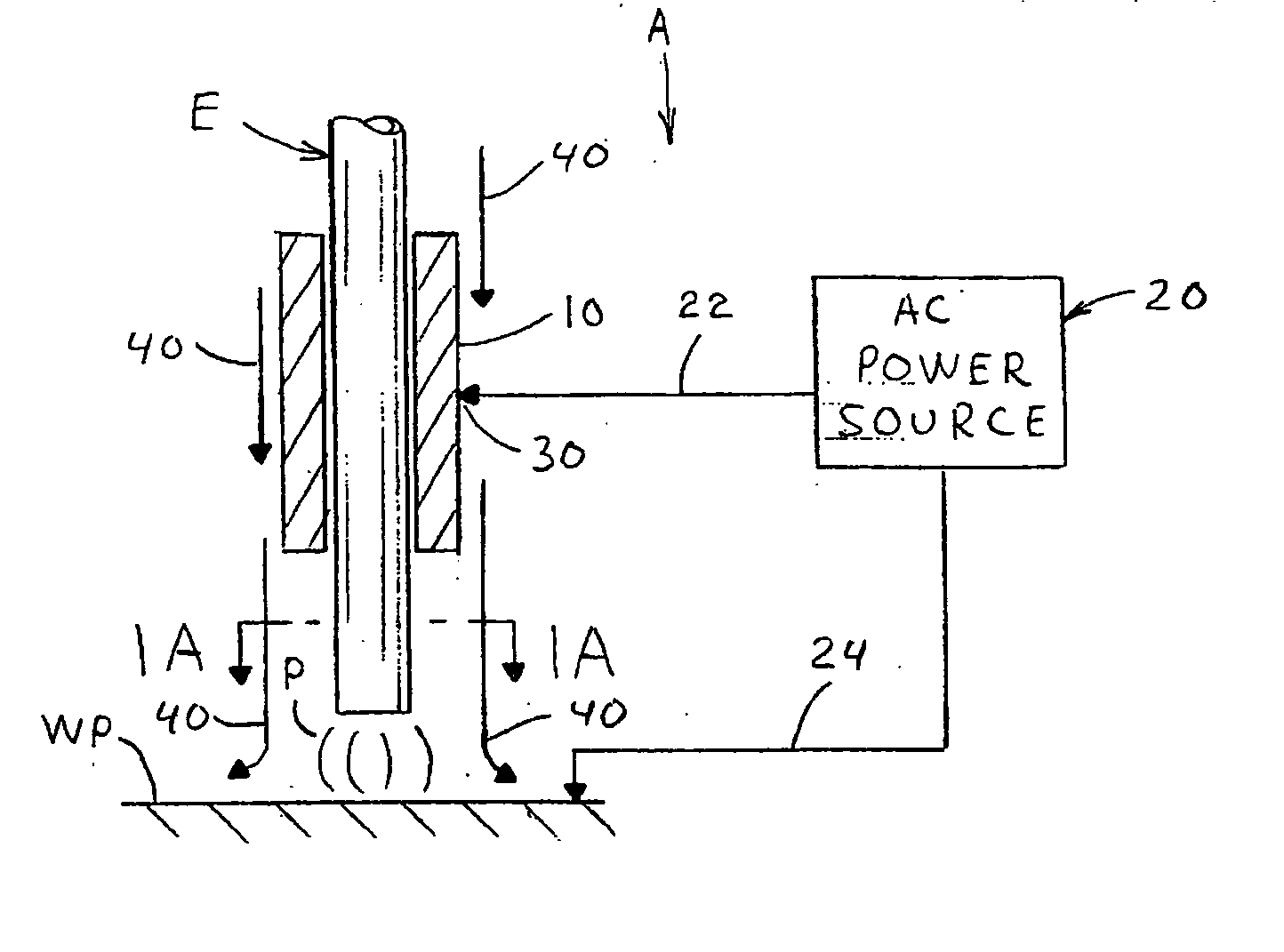Method of AC welding
- Summary
- Abstract
- Description
- Claims
- Application Information
AI Technical Summary
Benefits of technology
Problems solved by technology
Method used
Image
Examples
example 1
[0027]
TiO260-90% Sodium silicate1-20%Potassium silicate1-15%Sodium compound1-20%Colloidal Silica1-10%Other components0-5%
example 2
[0028]
TiO270-90% Sodium silicate4-15%Potassium silicate1-10%Sodium carbonate3-16%Colloidal Silica2-6% Other components0-1%
example 3
[0029]
TiO270-80%Sodium silicate3.5-10% Potassium silicate1.5-6% Sodium carbonate 5-15%Colloidal Silica2-5%Other components 0-0.5%
[0030] Novel flux cored electrode E utilizes sodium-silico-titanate to reduce the moisture pick-up properties of the core material during manufacturing. It also has proven to be an effective arc stabilizing substance when using the flux cored electrode in DC positive welding, as is common practice. It has been found that this particular compound when added to core 50 of electrode E also produces arc stability allowing the electrode to be used in an AC welding. This characteristic is used to practice the present invention. The grafted substance has proven beneficial as an arc stabilizer for a sinusoidal waveform 100, as shown in FIG. 2. It has also proven beneficial to stabilize the plasma column P when reversal of polarity is at a high voltage and high current, as is experienced in using generally rectangular type waveform, such as waveform 200 shown in ...
PUM
| Property | Measurement | Unit |
|---|---|---|
| Percent by mass | aaaaa | aaaaa |
| Percent by mass | aaaaa | aaaaa |
| Percent by mass | aaaaa | aaaaa |
Abstract
Description
Claims
Application Information
 Login to View More
Login to View More - R&D
- Intellectual Property
- Life Sciences
- Materials
- Tech Scout
- Unparalleled Data Quality
- Higher Quality Content
- 60% Fewer Hallucinations
Browse by: Latest US Patents, China's latest patents, Technical Efficacy Thesaurus, Application Domain, Technology Topic, Popular Technical Reports.
© 2025 PatSnap. All rights reserved.Legal|Privacy policy|Modern Slavery Act Transparency Statement|Sitemap|About US| Contact US: help@patsnap.com



